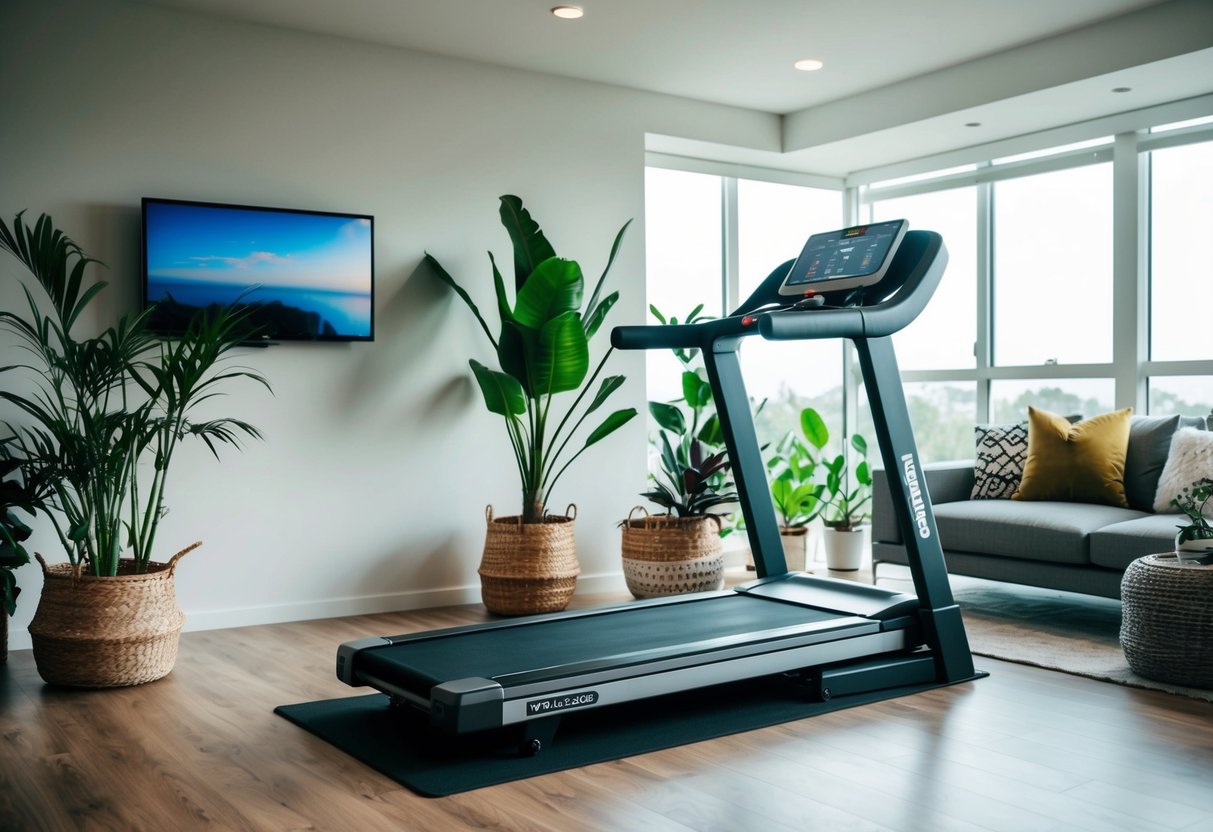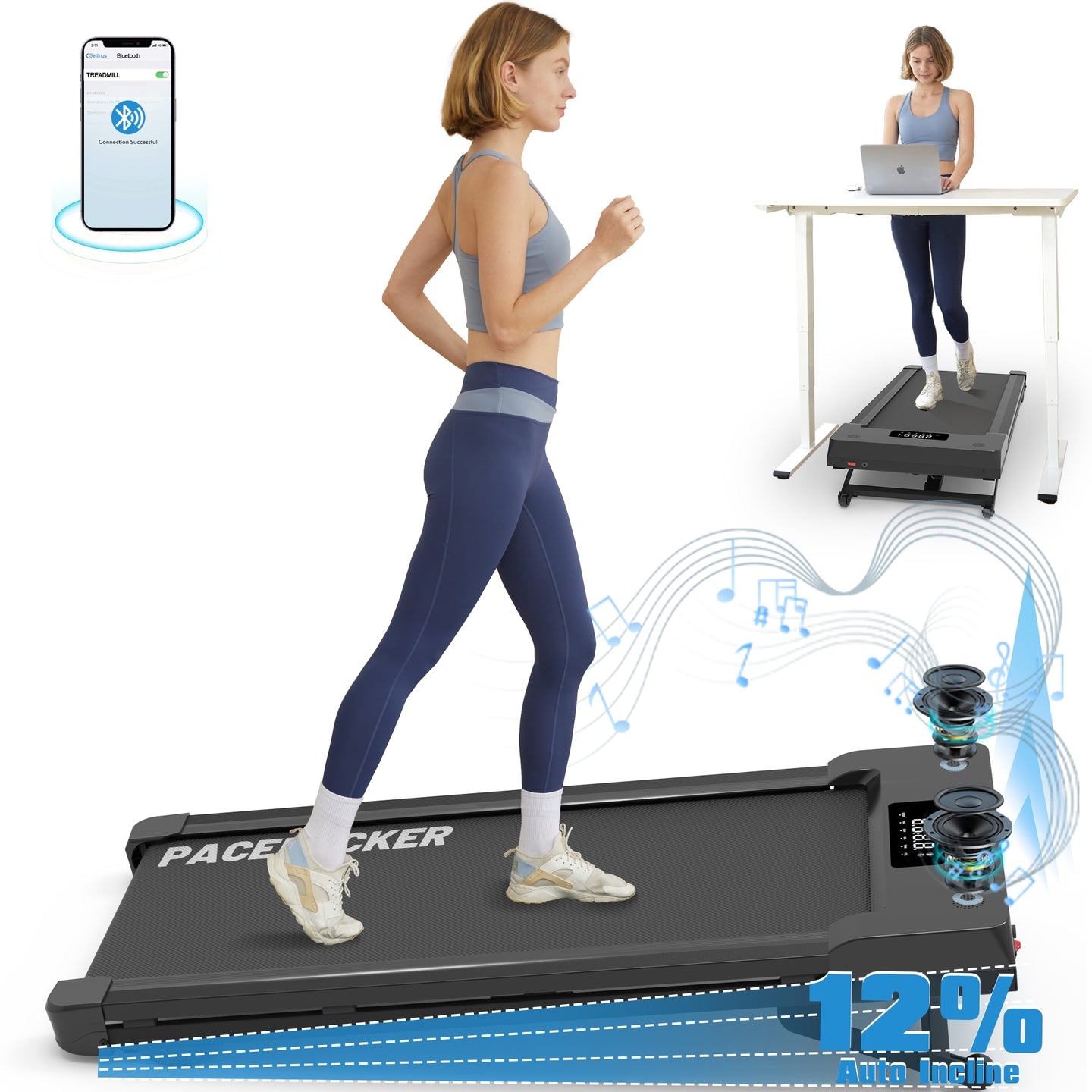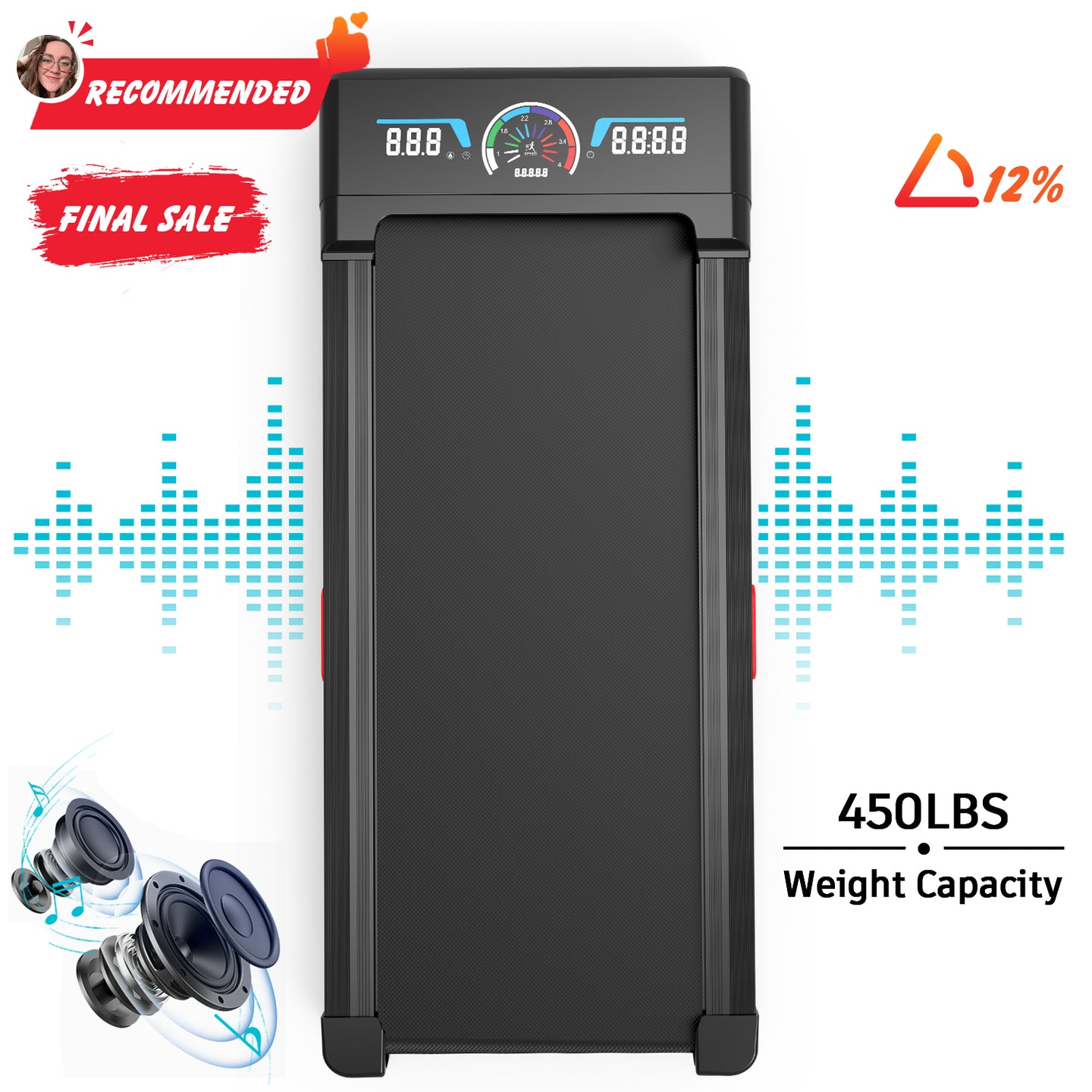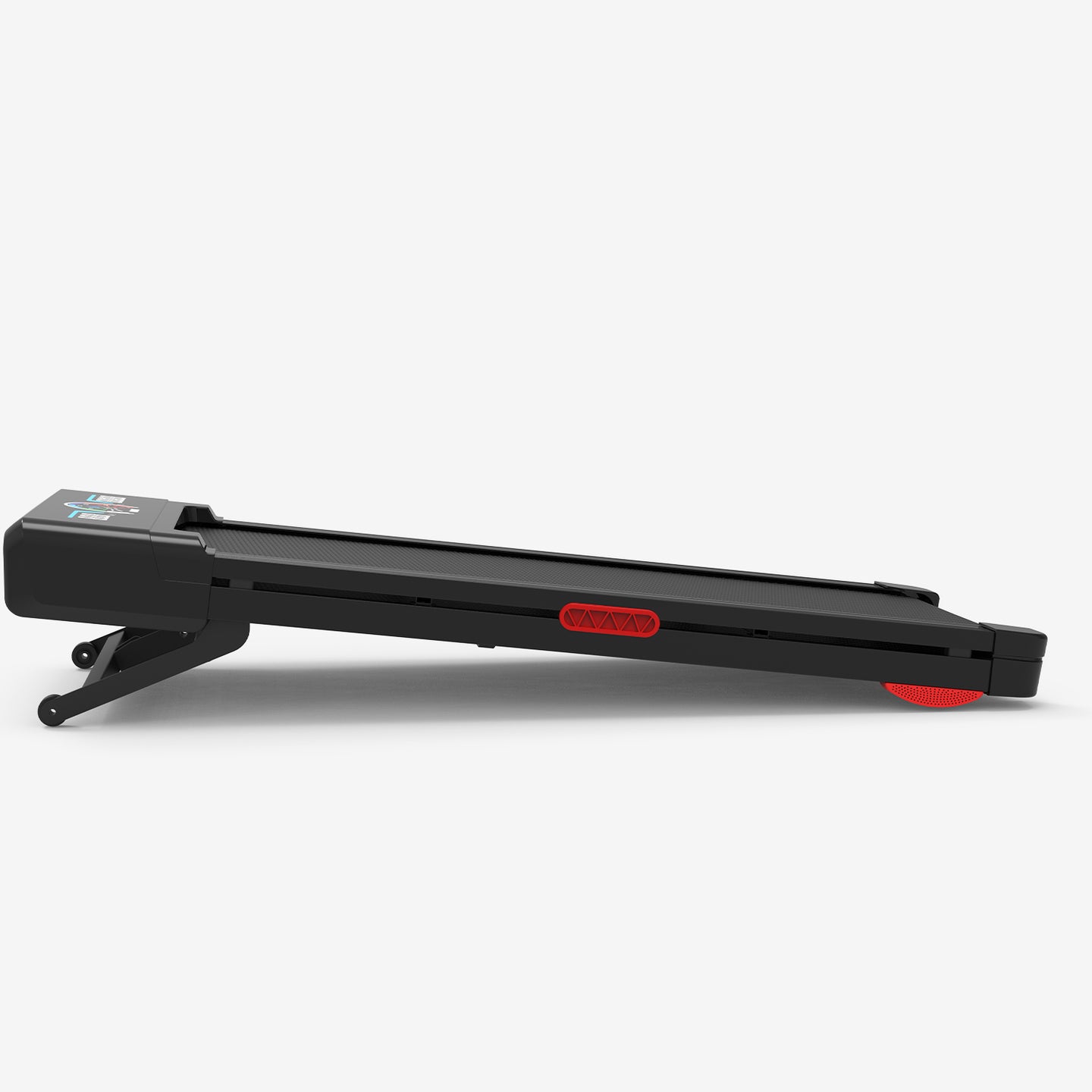Rowing Machine vs Walking Pad Treadmill

Don’t forget to check out our Pacerocker, Trailviber, and Trailviber Auto Incline walking pad treadmills.
Choosing between a rowing machine and a walking pad treadmill can be a game-changer for our fitness journeys. Each machine offers unique benefits and fits different lifestyle needs. Rowing machines engage our entire body, providing a full workout and improving strength. Walking pad treadmills, on the other hand, are easy to fit into our homes and are great for gentle, low-impact cardio.
If we want a low-impact, full-body workout, the rowing machine is the better choice. It's powerful for cardio and muscle building. The walking pad treadmill shines in convenience, perfect for those who want to stay active throughout the day. It’s compact and easy for us to use anytime.
Our choice depends on our fitness goals and space needs. Both machines can transform our home gym and help us stay on track with our health.
Key Takeaways
- Rowing machines offer a great full-body workout.
- Walking pad treadmills are compact and convenient.
- Choose based on fitness goals and home space.
Understanding Cardiovascular Fitness
Cardiovascular fitness is a key component of overall health, playing a vital role in our ability to perform daily activities and improve heart health. Let's explore the benefits of cardiovascular exercise and the types of workouts that can help us achieve these gains.
Cardiovascular Health Benefits
Engaging in cardio activities helps our heart and lungs work more efficiently. Regular exercise strengthens the heart muscle, improving circulation and oxygen flow throughout the body. This reduces the risk of heart disease, stroke, and high blood pressure.
Lower cholesterol levels are another benefit of cardio. It increases good HDL cholesterol and decreases bad LDL cholesterol. These changes contribute to improved cardiovascular health over time.
For those aiming to maintain a healthy weight, cardio is crucial. It burns calories and can boost our metabolism. As a team, we should aim for at least 150 minutes of moderate-intensity cardio exercise each week for optimal health.
Cardio Workout Types
There are several types of cardio workouts we can incorporate into our fitness routine. Running, cycling, swimming, and dancing are popular choices that elevate heart rate and provide an excellent cardiovascular workout.
Low-impact exercises like walking and rowing are ideal for those with joint issues. They offer a solid cardio workout without putting too much stress on our bodies. Using equipment like walking pad treadmills or rowing machines can be particularly effective.
High-Intensity Interval Training (HIIT) is another great option. It alternates short bursts of intense activity with periods of rest or lower-intensity exercise. This not only improves cardiovascular fitness but also enhances metabolic health. By mixing these workouts, we can keep our routine engaging and effective.
Rowing Machines Explained
Rowing machines are versatile tools that deliver a full-body workout while being low-impact. Let's explore how they work, which muscles they engage, and the features they offer.
Mechanics of the Rowing Stroke
Understanding the mechanics of the rowing stroke is crucial for getting the most out of a rowing session. The stroke involves four main phases: catch, drive, finish, and recovery.
In the catch phase, we lean forward with our knees bent. During the drive phase, we push through our legs, pulling the handle towards the torso. The finish concludes the movement, and the recovery takes us back to the starting position.
Proper form ensures effectiveness, combining smooth motion with control. Most machines allow us to adjust the resistance, simulating the feeling of rowing on water. This helps in building strength and increasing cardiovascular fitness.
Muscle Groups Targeted
Rowing machines target a variety of muscle groups, making them excellent for full-body training. During a rowing session, our leg muscles handle most of the power during the drive. This primarily involves the quadriceps and hamstrings.
The upper body is engaged too, including muscles in the back, shoulders, and arms. The biceps and triceps actively work as we pull the handle. Core muscles, including abdominals, work to stabilize us throughout the motion. This balanced approach helps tone multiple areas efficiently.
Rowing is popular among those who want a comprehensive workout without high-impact exercises. It offers the benefit of improving muscle endurance and strength simultaneously.
Rowing Machine Features
When choosing a rowing machine, it's important to consider the features that best suit our fitness goals. Most machines offer adjustable resistance levels, which can challenge different fitness levels and simulate various water conditions.
Some models include digital monitors to track distance, calories burned, and strokes per minute. This helps us stay motivated and monitor our progress. Foldable designs are available for convenient storage, making them suitable for various living spaces.
Additionally, ergonomic handles and comfortable seats improve the overall rowing experience. By considering these features, we ensure that our equipment complements our workout routines effectively.
Walking Pad Treadmills Unveiled
Walking pad treadmills offer unique features like portability, making them ideal for small spaces. They provide low-impact workouts suitable for all fitness levels.
Design and Functionality
Walking pads are compact and slim. They can easily fit under a desk for convenient use while working. Unlike traditional treadmills, these don’t have handles or large displays, making them much lighter and easier to store. Some models fold, adding to their portability. The controls are straightforward, often using remote controls or mobile apps to adjust speed.
Walking pads are designed for walking rather than running, usually supporting speeds up to 4 mph. This makes them great for low-intensity workouts. Handles typical of larger treadmills are often missing to keep the design sleek and simple.
Walking Pad Advantages
Portability is a major perk. Their lightweight construction makes it easy to move them around. Whether you're in a small apartment or an office, these can be tucked away when not in use. Their simple design is more user-friendly, especially for beginners who might find larger treadmills daunting.
For those looking for a low-impact workout, walking pads are ideal. They offer a gentle exercise routine that is gentle on joints, perfect for older individuals or those recovering from injuries. Additionally, many walking pads use quiet motors, meaning you can use them without worrying about disturbing others.
Difference: Walking Pad vs Manual Treadmills
Walking pads and manual treadmills serve different purposes. While walking pads are powered electrically, manual treadmills rely on the user's movement to power the belt, often providing a more intense workout. Manual treadmills typically have an incline to help generate belt movement, but they lack the portability of walking pads.
Walking pads are simpler in design and don't require the physical exertion needed for manual treadmills. They offer a consistent, controlled workout environment. Incline settings are often absent in walking pads but can be a feature of manual treadmills that aids in intensifying workouts. Manual treadmills can offer more versatility in workout intensity but lack the convenience of under-desk use.
Comparing Workout Intensity and Impact
When choosing between a rowing machine and a walking pad treadmill, it's important to recognize their different workout intensities and impacts on the body. We'll explore each option's impact on joints and effectiveness in burning calories.
High-Impact vs Low-Impact Exercise
Rowing machines are typically considered low-impact. They allow us to exercise without putting too much stress on our joints. This makes them a good option for those with joint concerns or recovering from injury.
Walking pad treadmills provide a gentler, low-impact exercise compared to running. Walking involves less force on our knees and ankles. This makes it suitable for those seeking a cardio workout while keeping joint impact minimal.
Comparison Table:
|
Exercise Option |
Impact Level |
|
Rowing Machine |
Low-Impact |
|
Walking Pad Treadmill |
Low-Impact |
Both options give us a chance to stay active while taking care of our joints.
Calorie Burn and Weight Loss
The calorie burn and energy expenditure can vary between the two exercises. Rowing machines work multiple muscle groups like arms, legs, and core, potentially burning more calories in a short time. It's a great cardiovascular workout that supports weight loss goals.
Walking pads offer a steady calorie burn. The intensity might be lower compared to rowing, but they provide consistent energy expenditure during longer sessions. Walking regularly helps in maintaining a healthy weight and improving cardiovascular health.
Ultimately, both tools can aid in burning calories and weight management, but our choice might depend on workout preferences and specific fitness goals.
Health and Fitness Considerations
When comparing rowing machines and walking pad treadmills, we need to focus on their benefits for various fitness levels, the chances of injury, and their impact on bone strength and muscle building. Let's dive into these points to understand which might be the better option for staying healthy.
Exercise for Specific Fitness Levels
Choosing the right equipment depends on our fitness level. Rowing machines offer full-body workouts, building strength and endurance. They're great for those wanting a more intense exercise.
Walking pad treadmills are ideal for beginners or anyone easing back into fitness. They offer low-impact cardio, which is easier on the joints. We can adjust the pace, making it suitable for different fitness goals. Both machines support hitting daily activity targets, just at different intensities.
Injury Risk and Prevention
Staying injury-free is important, and each machine has its own risks. Rowing machines require correct form to prevent back and shoulder strain. Lessons or guidance can help us avoid common mistakes.
Walking pads have a lower injury risk due to their simplicity and gentle impact on joints. Proper shoes and checking the walking surface reduce the chance of slips. Both options require a warm-up and cool-down routine to keep us safe during workouts.
Bone Density and Muscle Mass
Exercise can improve bone density and muscle mass, both important for health. Rowing machines enhance muscle mass because they engage multiple muscle groups. This can help strengthen bones and improve overall muscle tone.
Walking pads, while gentle, promote bone health through consistent weight-bearing activity. They help maintain bone density and are excellent for those who need a low-impact form of exercise. Both machines play a role in keeping our bones and muscles fit.
Practical Insights: Home Gym Integration
When adding a rowing machine or a walking pad treadmill to our home gym, we must consider space, storage options, and how to keep the equipment in good condition. These factors help ensure we get the most out of our fitness tools.
Space and Storage Solutions
Creating a home gym involves planning, especially if space is tight. Rowing machines are often long, requiring more floor space. To save space, we can look for foldable options or machines that can be stored vertically against a wall. Walking pad treadmills are usually more compact, sliding under a bed or sofa when not in use.
Measuring our available space before buying equipment is crucial. We should ensure there's enough room for workout movements and some extra space for comfort. Using multi-purpose storage solutions like wall hooks or shelving units can keep our fitness area tidy. Clear containers can store small accessories like weights or resistance bands neatly.
Equipment Maintenance Tips
Proper care of our gym equipment keeps it in top shape. For rowing machines, we should regularly clean the rails and check the chain for lubrication needs. Keeping them free of dust and sweat will help prevent rust and wear. We should also inspect our walking pads for any damage, checking belts and motors frequently.
Preventing dust buildup is key. We should wipe down surfaces after each use and vacuum the area often. We can also use protective covers if the equipment is stored in a garage or basement. Regularly checking for software updates can ensure digital features function smoothly.
Enhancing Your Fitness Journey
Enhancing our fitness journey involves setting clear health goals and possibly incorporating a personal trainer to help us stay on track. Whether we're using a rowing machine or a walking pad treadmill, staying focused and committed is key.
Setting and Achieving Health Goals
It's crucial to define what we want to achieve with our fitness regimen. Do we want to build muscle, increase endurance, or improve overall fitness? By setting specific and measurable goals, we can track our progress and stay motivated.
For example:
- Increasing rowing stamina by 15 minutes.
- Walking 10,000 steps daily on the treadmill.
- Building upper body strength.
Keeping a workout log or using a fitness app can help us monitor our achievements. Celebrating small milestones along the way keeps us encouraged and engaged in the process.
Role of a Personal Trainer
Working with a personal trainer can make a significant difference in our fitness journey. Trainers bring expertise in creating tailored workout plans, ensuring we are using equipment like rowing machines and treadmills safely and effectively.
Benefits of a Personal Trainer:
- Personalized training plans
- Ongoing motivation and support
- Guidance on form and technique
By investing in a personal trainer, we can optimize our workout sessions, target our specific needs, and reduce the risk of injury. A trainer becomes our partner in success, helping us stay accountable and pushing us to reach our fitness goals.
Frequently Asked Questions
Rowing machines and walking pad treadmills both offer unique benefits for fitness enthusiasts. Here, we explore how each can fit into a workout routine, focusing on calorie burn, joint impact, and weight loss.
What are the benefits of using a rowing machine compared to a walking pad treadmill?
Rowing machines give us a full-body workout. They engage arms, legs, and core. This can be great for building overall strength. A walking pad treadmill primarily targets lower body muscles.
How does calorie burn on a rowing machine differ from that on a treadmill?
When we use a rowing machine, we tend to burn more calories in less time. This is because rowing involves more muscle groups. Walking pads can be less intense, though they contribute to steady, lower-calorie burn.
For individuals focused on weight loss, should they opt for a rowing machine or a walking pad treadmill?
Weight loss can be more effective with rowing. The intensity and the workout variety on rowing machines help us burn calories faster. Walking pads, while beneficial for light activity, might require longer sessions.
Can a consistent rowing machine workout lead to significant belly fat reduction?
Yes, when we stick to a steady rowing routine, we often see changes in belly fat. This is due to its high-intensity nature combined with core-focused movements.
How does the impact on joints compare between a rowing machine and a walking pad treadmill?
Rowing machines are generally low-impact, making them gentle on our joints. Walking pad treadmills can put more pressure on knees and hips, especially over long periods.
Is it possible to achieve overall fitness using only a rowing machine?
We can certainly attain overall fitness with a rowing machine. Its combination of strength training and cardio helps build endurance and muscle. However, including other activities can provide a more balanced routine.
Explore which fitness machine boosts your health better between the rowing machine for full-body workouts and the walking pad treadmill for convenience.







